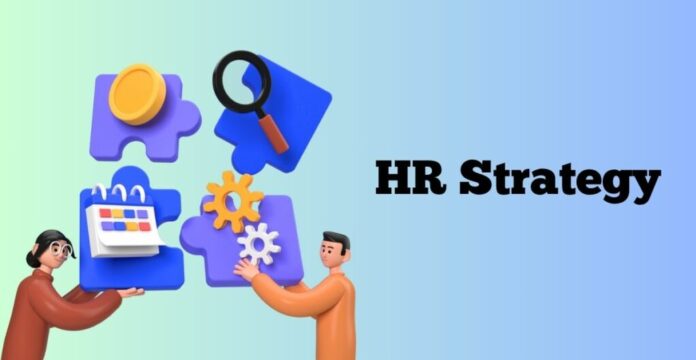Employees play a crucial role in a company’s success. If their well-being is neglected, their efficiency may decline, leading to burnout and disengagement. This can negatively impact productivity and overall business performance.
Prioritizing employee experience is essential for any organization. HR professionals play a vital role in fostering a positive work environment, ensuring employees feel valued, motivated, and supported throughout their career journey.
A recent study revealed that 49% of employees believe their workplace does not meet the expectations set during recruitment. While not all dissatisfied employees will leave, poor workplace experiences can lead to reduced productivity and missed deadlines.
Table of Contents.
The Role of HR in Employee Experience Management
Innovative HR Solutions to Enhance Employee Experience
Strengthening Communication and Flexibility with Scheduling Apps
Enhancing Performance Reviews with HR Analytics
Streamlining Recruitment with Applicant Tracking Systems
Boosting Collaboration for Workplace Efficiency
Offering Competitive Benefits to Improve Employee Satisfaction
HR’s Role in Shaping Employee Experience.
Human Resources oversees employee experience management, ensuring a positive work culture and addressing workplace challenges. While direct supervisors influence team morale, HR must also support management to maintain a balanced workplace.
From recruitment to exit interviews, every interaction shapes an employee’s perception of the company. HR is responsible for hiring, onboarding, and performance evaluations, as well as handling workplace disputes to maintain a safe and professional environment. Without active HR involvement, employee experience initiatives would struggle to succeed.
Leveraging HR Innovations to Improve Employee Engagement.
Retaining employees remains a challenge for many HR professionals, with 83% of HR managers citing retention as a significant concern. Organizations must invest in tools and strategies that enhance employee satisfaction and engagement.
Improving Communication and Scheduling with Employee Apps.
Workplace communication issues often extend to employee scheduling, leading to misunderstandings and inefficiencies.
In today’s flexible work environment, HR must effectively manage employees working under different arrangements, such as remote, hybrid, and flexible-hour contracts. Implementing an employee scheduling app can simplify workforce management by:
Creating and updating schedules efficiently.
Tracking working hours and overtime.
Facilitating real-time communication between staff and management.
Preventing excessive work hours for health and safety compliance.
Enhancing Performance Reviews with HR Analytics.
Regular performance evaluations are critical for employee development, yet some
businesses neglect this process. Studies indicate that nearly 30% of employees receive no formal feedback, which can hinder motivation and growth.
To ensure consistent performance reviews, HR teams can implement HR analytics software that:
Automates reminders for evaluations.
Tracks employee progress and performance trends.
Identifies areas for professional development.
Saves HR teams time through automation.
By integrating data-driven insights, HR can better understand workforce needs and create targeted strategies for improvement.
Streamlining Recruitment with Applicant Tracking Systems.
A seamless recruitment experience is a fundamental part of employee satisfaction. Applicant Tracking Systems (ATS) help HR teams attract top talent and optimize hiring processes.
Benefits of an ATS include:
Automated candidate screening for unbiased hiring decisions.
Performance tracking through recruitment analytics.
Streamlined interview management.
Real-time communication to engage candidates.
Platforms like ICIMS, an AI-driven hiring solution, facilitate efficient talent acquisition by enhancing engagement and workflow management. Implementing ATS technology ensures new employees have a smooth and positive introduction to the organization.
Boosting Collaboration for Workplace Efficiency.
With hybrid and remote work models becoming more common, maintaining seamless collaboration is essential. Digital tools like Slack keep teams connected, regardless of
location.
HR teams can use collaborative platforms to:
Facilitate real-time communication between employees.
Improve project management and teamwork.
Ensure remote workers remain engaged and included.
By investing in digital collaboration tools, businesses can enhance productivity while adapting to the evolving work environment.
Offering Competitive Benefits to Improve Employee Satisfaction.
Employee benefits extend beyond salary, influencing job satisfaction and retention. Personalized work packages can enhance workplace morale and loyalty.
HR teams can utilize platforms like PerkBox to customize benefits such as:
Monthly performance-based bonuses.
Gift vouchers and discount programs.
Personalized recognition initiatives.
Providing meaningful rewards fosters a culture of appreciation, motivating employees to perform at their best.
Transforming HR Practices for a Better Employee Experience.
HR departments play a crucial role in shaping an organization’s work culture. To maintain a motivated workforce, businesses must invest in performance evaluations, digital collaboration, and attractive benefits.
By prioritizing employee well-being and engagement, organizations can cultivate a loyal and high-performing workforce, ultimately driving long-term success.





